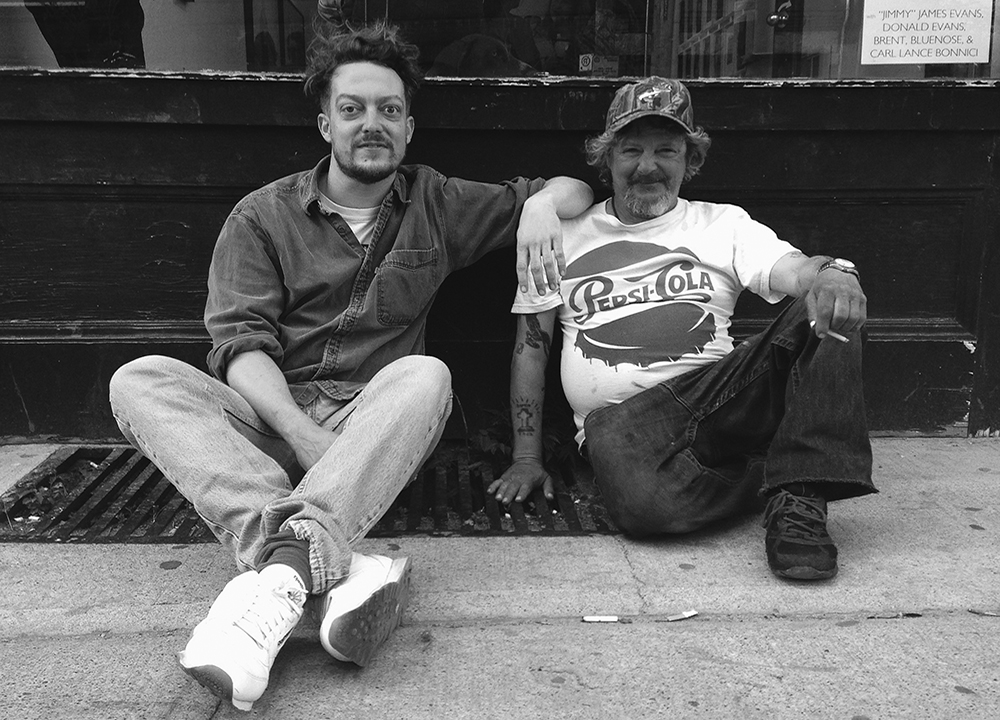Alexia Lawson | Contributor
Featured image by Alexia Lawson
Meet Jeff Bierk, a Toronto photographer who documents both beauty and tragedy in Toronto’s neighbourhoods with junkies and homeless people being the subject of many of his photographs. While the raw and honest elements of Bierk’s work might mistake him for a street photographer, his work strongly differs from this practice. He is currently featured in the Scotiabank CONTACT Photography Festival, an annual month-long festival held throughout the GTA in May. Bierk has two shows on display, Top Left and 10 Blankets, the latter of which has been praised as a must-see of the festival. Excalibur had the opportunity to attend the opening night of Top Left on May 13 and interview the man behind the powerful images.
From making photographs to displaying them, transparency and respect remain principles in Bierk’s work. He has developed a collaborative practice where the subjects of his photographs are recognized as collaborators, with profit splitting being one way to demonstrate this. This perspective comes from Bierk’s understanding that without the labour that his collaborators put into daily life, none of the photographs would be possible. He also offers accessible public viewing of his work by displaying them on streets, perhaps a response to the widening of class gaps and digital divides.
Consent has been another cornerstone of Bierk’s recent photography. Bierk explains how he used to take photographs of homeless people, who he refers to as “precariously housed,” sleeping on hot air grates on the corner of Queen Street East and Victoria Street.
“I used to do it without consent,” describes Bierk. “Those images, without consent, mark a big transformation in my way of making photographs because I was operating without a lot of thoughtfulness. I had entitlement where I wanted to capture the honesty. I [felt I] had the right to photograph you and use your body to tell my story.”
Bierk’s journey has not come without hardship. Tragedy has influenced much of his work.
“I experienced three deaths at a pretty young age. My parents and the person I fell in love with died,” says Bierk with both strength and sadness.
Bierk’s parents were both artists, so as a child, he was exposed to their art from a young age. His father was a painter and even taught him how to take photographs.
“I was seeking connection to my father and my mother through trying to become an artist and make photographs,” he says.
For the majority of his life, Bierk battled with a drug addiction, though he has been sober for four years.
“I was really into photography and then I got really into drugs. So I checked out of the world for a long time,” says Bierk.
Photography has been a mechanism to cope with his addiction. “I think seeking quick interactions with strangers was a way for me to connect with my addiction and connect with the kind of excitement I felt when I was doing drugs – being in places I shouldn’t be in, seeing these secret places we don’t see unless we’re involved.”
Beauty might not be the word dominant culture would use to describe his work but Bierk begs to differ.
“At the core, it’s about honouring a kind of beauty that I see, though it is not a dominant notion of what is beautiful,” explains Bierk. Bierk believes narrow perceptions of beauty are why his portraits are mischaracterized as street photography.
“You show portraits of people and automatically have it lumped into street photography,” he says.
Bierk’s work is refreshing and his story is one that adds dimension to conversations of street, candid and beauty photography, pushing conversation of what it means to be homeless. For more information on Bierk’s shows and other photography events throughout the month of May, visit the Scotiabank CONTACT Photography Festival website.


